
When selecting an AI language model, it's not just about performance - it’s about how well the model fits your specific needs. Models like GPT-4, GPT-5, Claude, and Qwen each excel in different areas. For instance:
Prompts.ai simplifies the comparison process by offering tools to test and evaluate over 35 models in one platform. It tracks token usage, costs, and provides side-by-side comparisons tailored to your use case. This ensures you can make data-driven decisions to optimize performance and costs.
| Model | Strengths | Best Use Cases |
|---|---|---|
| GPT-4/GPT-5 | High reasoning and language skills | Creative tasks, in-depth analysis |
| Claude | Safety-focused, ethical content generation | Regulated industries, customer service |
| Qwen | Multilingual and cost-efficient | Global business operations |
| DeepSeek | Technical problem-solving | Coding, technical documentation |
Key Insight: The right model depends on your goals. Use tools like Prompts.ai to test models in real-world scenarios, optimize prompts, and align AI spending with measurable outcomes.
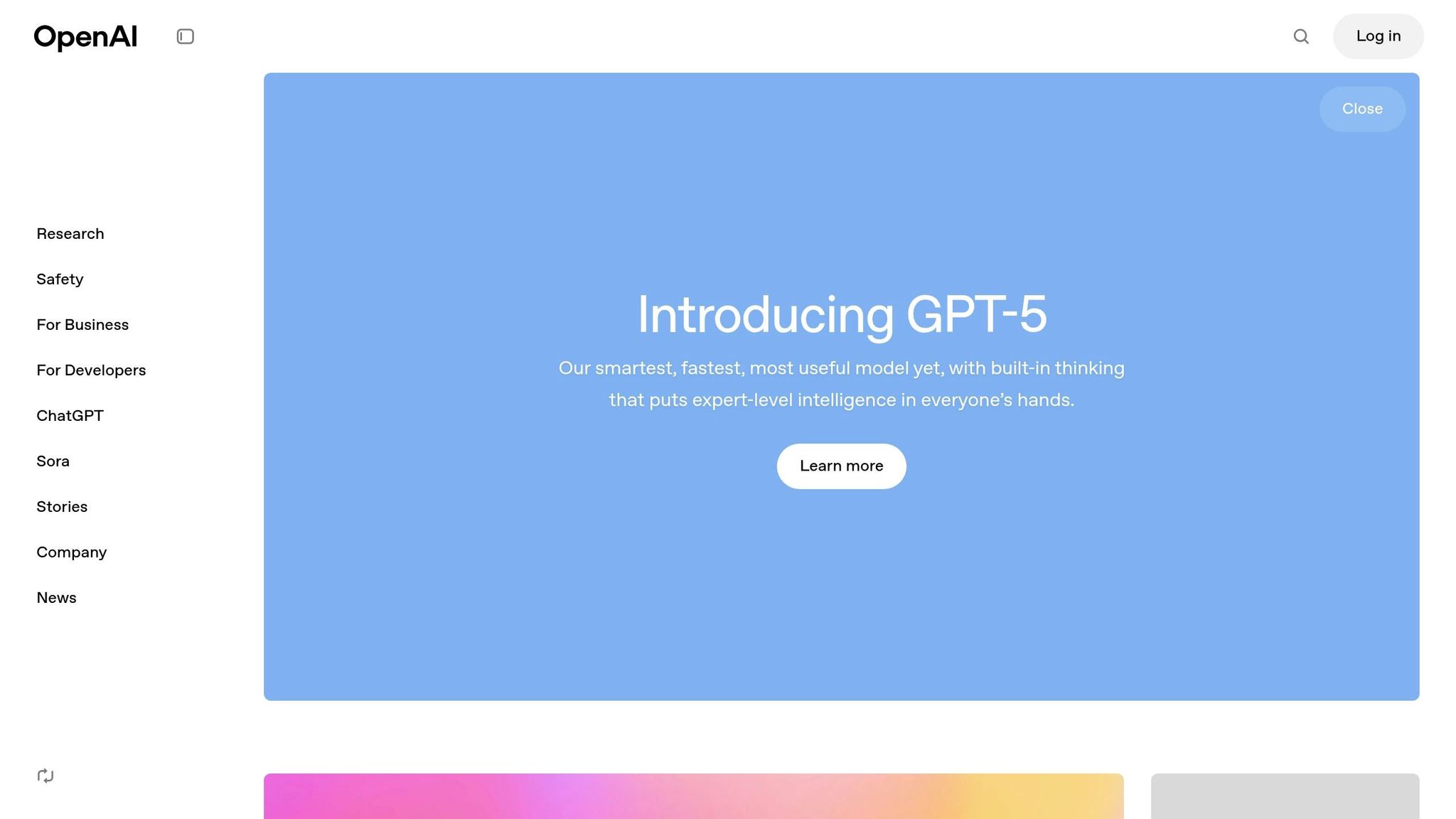
Evaluating GPT models thoroughly is essential for achieving optimal AI performance, especially in specialized applications. OpenAI's flagship models, GPT-4 and GPT-5, set a high benchmark for enterprise use, though their effectiveness often depends on the specific use case.
GPT-4 consistently excels in generating accurate content within structured domains, such as technical documentation. However, its accuracy declines when dealing with highly specialized topics unless additional context is provided. GPT-5 builds on this foundation with enhanced reasoning capabilities, offering noticeable improvements in solving mathematical problems and performing logical inferences.
Both models perform well in general knowledge tasks and demonstrate a strong ability to follow intricate instructions with multiple constraints. This balance between accuracy and instruction-following highlights their capability to produce thorough and reliable responses.
While both models deliver detailed and comprehensive responses, this can sometimes result in excessive verbosity when brevity is preferred. GPT-5, however, shows better contextual judgment, often tailoring response length more effectively based on the input prompt.
For enterprises requiring in-depth explanations, these models shine. However, for tasks like customer service or social media content, prompts may need to explicitly limit response length to achieve concise outputs.
Tone and style play a significant role in aligning AI outputs with a brand's identity. GPT-4 demonstrates a remarkable ability to shift seamlessly between formal, casual, and technical tones. GPT-5 enhances this adaptability, showing a deeper grasp of cultural nuances and audience-specific language.
Both models maintain a consistent tone across extended interactions, making them ideal for applications like customer support chatbots or content creation, where maintaining a cohesive brand voice is critical.
Cost becomes a crucial factor when deploying these models at scale. GPT-4 pricing is based on input and output token usage, which can lead to significant costs for high-volume operations. GPT-5, despite its potentially higher per-token price, often delivers better results per dollar spent due to its improved accuracy and efficiency, reducing the need for multiple iterations.
Prompts.ai's cost tracking tools allow for precise budget management and optimization. For many scenarios, the enhanced performance of GPT-5 can help offset its higher initial costs by reducing overall processing time and resource usage.
Both models are designed to handle concurrent requests effectively through OpenAI’s infrastructure, though rate limits can present challenges for enterprise-scale applications. GPT-4 offers more predictable availability, whereas GPT-5 access may be more restricted depending on the subscription tier.
For large-scale deployments, optimizing prompts is essential to ensure consistent performance across diverse user inputs. Both models excel in managing complex, multi-turn conversations, making them suitable for applications requiring sustained interaction quality. However, this capability increases computational demands, which must be factored into scalability planning. These technical aspects highlight the need for careful consideration when comparing the models for enterprise use.
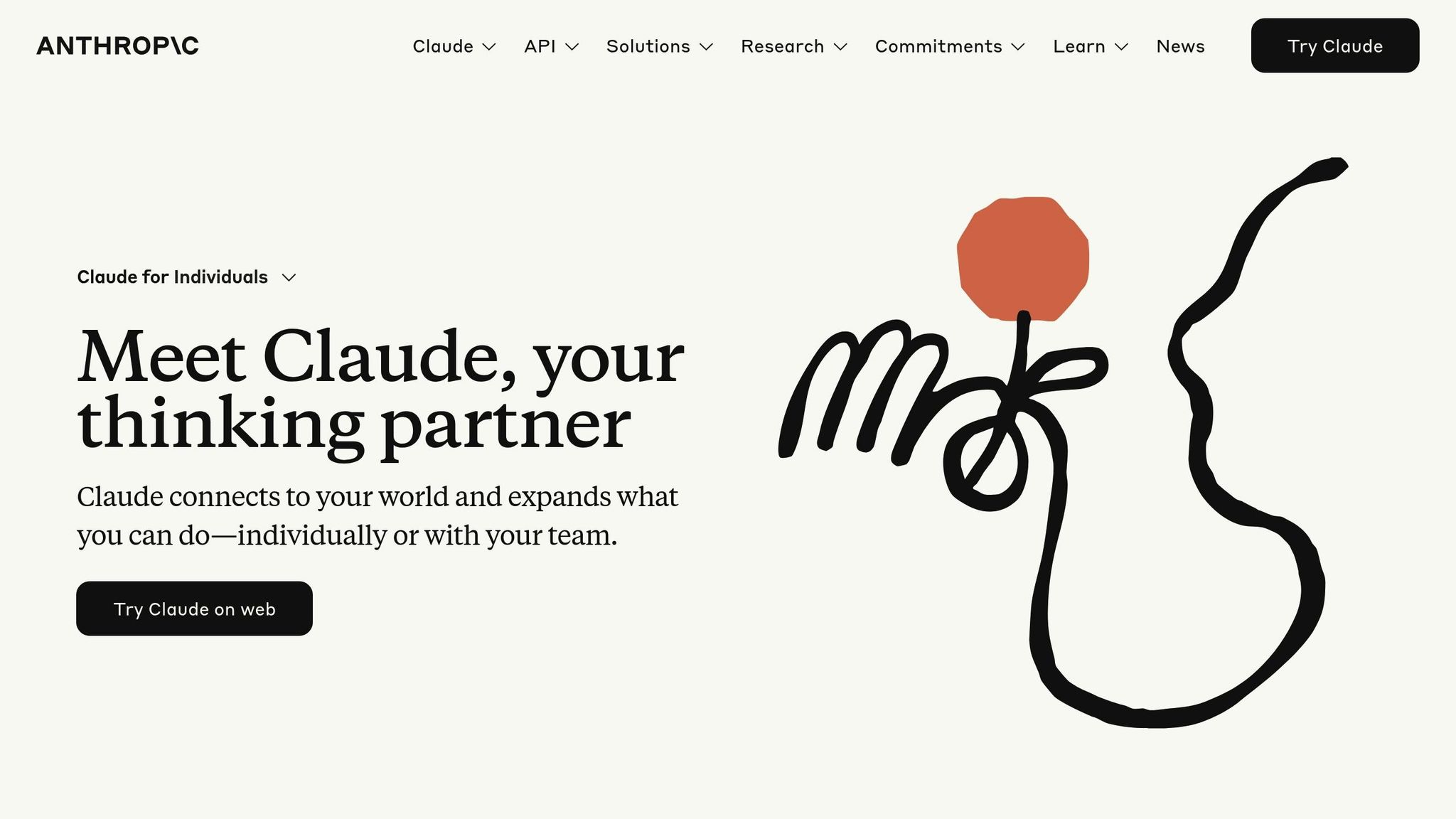
Claude, developed by Anthropic, stands out as a safety-focused alternative in the world of AI models. It’s particularly well-suited for generating thoughtful and ethically sound content, making it a strong contender for applications that demand careful moderation and adherence to ethical guidelines. Its ability to maintain conversational flow while prioritizing safety sets it apart from other models.
Claude performs exceptionally well in analytical tasks, maintaining context and ensuring factual consistency. Its strength lies in handling complex ethical scenarios and addressing situations that require weighing multiple perspectives with care.
That said, Claude’s cautious nature can sometimes work against it. In certain domains, it may decline to provide information that other models would handle without hesitation. While this conservative approach enhances safety, it may limit its usefulness in scenarios where users seek more creative or exploratory outputs.
Claude delivers responses that are both thorough and well-organized, often breaking down intricate topics into manageable pieces. This structured approach ensures clarity and logical flow, making it easier for users to comprehend even complex subjects.
One of Claude’s distinguishing traits is its transparency. The model frequently acknowledges its limitations or uncertainties, which can foster trust. However, this tendency can occasionally make its responses feel less confident, even when the information provided is accurate and helpful. These characteristics contribute to Claude’s overall reliability, particularly in scenarios where trust and clarity are paramount.
Claude’s tone is consistently appropriate, adapting seamlessly to match the complexity of the topic and the expertise level of the user. It strikes a balance between being accessible and professional, ensuring that even intricate concepts are explained clearly without compromising on precision.
The model maintains a respectful and helpful tone, steering clear of overly casual language. This makes it well-suited for professional contexts where credibility and clarity are essential.
Claude operates on a token-based pricing model, similar to other leading language models. Its strong ability to follow instructions reduces the need for multiple iterations, which can save costs in scenarios requiring rigorous content review.
For use cases involving ethical considerations or content moderation, Claude’s built-in safety mechanisms can minimize the need for additional filtering systems. This integrated approach can result in cost savings, particularly in deployments where content review is a critical component.
Claude handles concurrent requests reliably, making it a dependable choice for enterprise-level deployments. Its ability to deliver consistent performance across diverse input types ensures predictable outcomes, which is crucial for large-scale applications.
However, its conservative safety measures can occasionally slow down processing, especially in high-volume or time-sensitive environments. While the model’s thoroughness is an asset, it may create bottlenecks in scenarios where speed is a priority. Balancing quality with efficiency remains a key consideration when evaluating Claude for such applications.
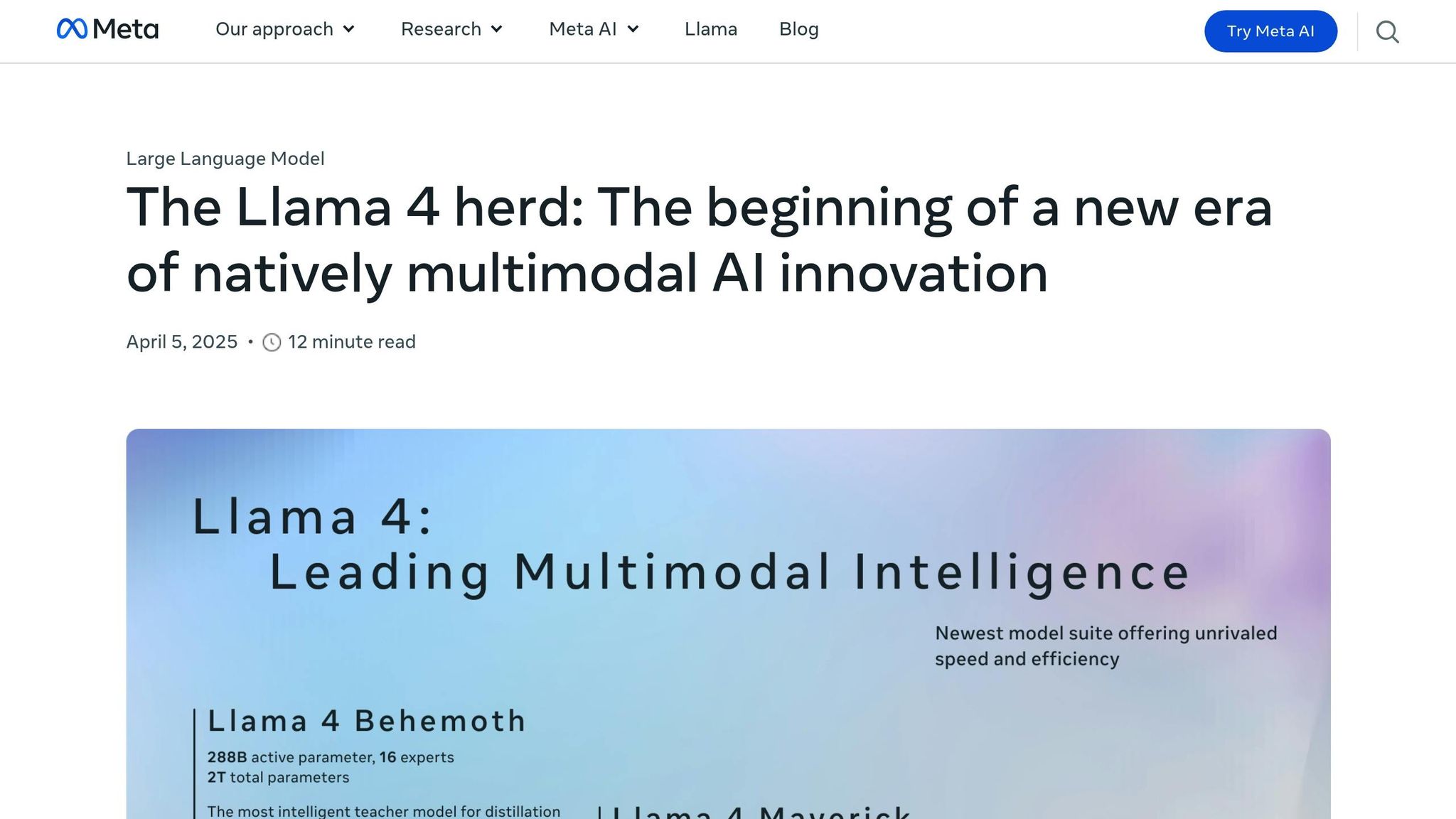
At this time, we are holding off on a detailed performance review of Meta's Llama 4. The decision stems from a lack of verified data regarding its accuracy, reliability, tone, style, cost-effectiveness, and scalability.
As new, validated information becomes available, we’ll revisit this section to provide a thorough comparison with other top-performing models. Stay tuned for updates.
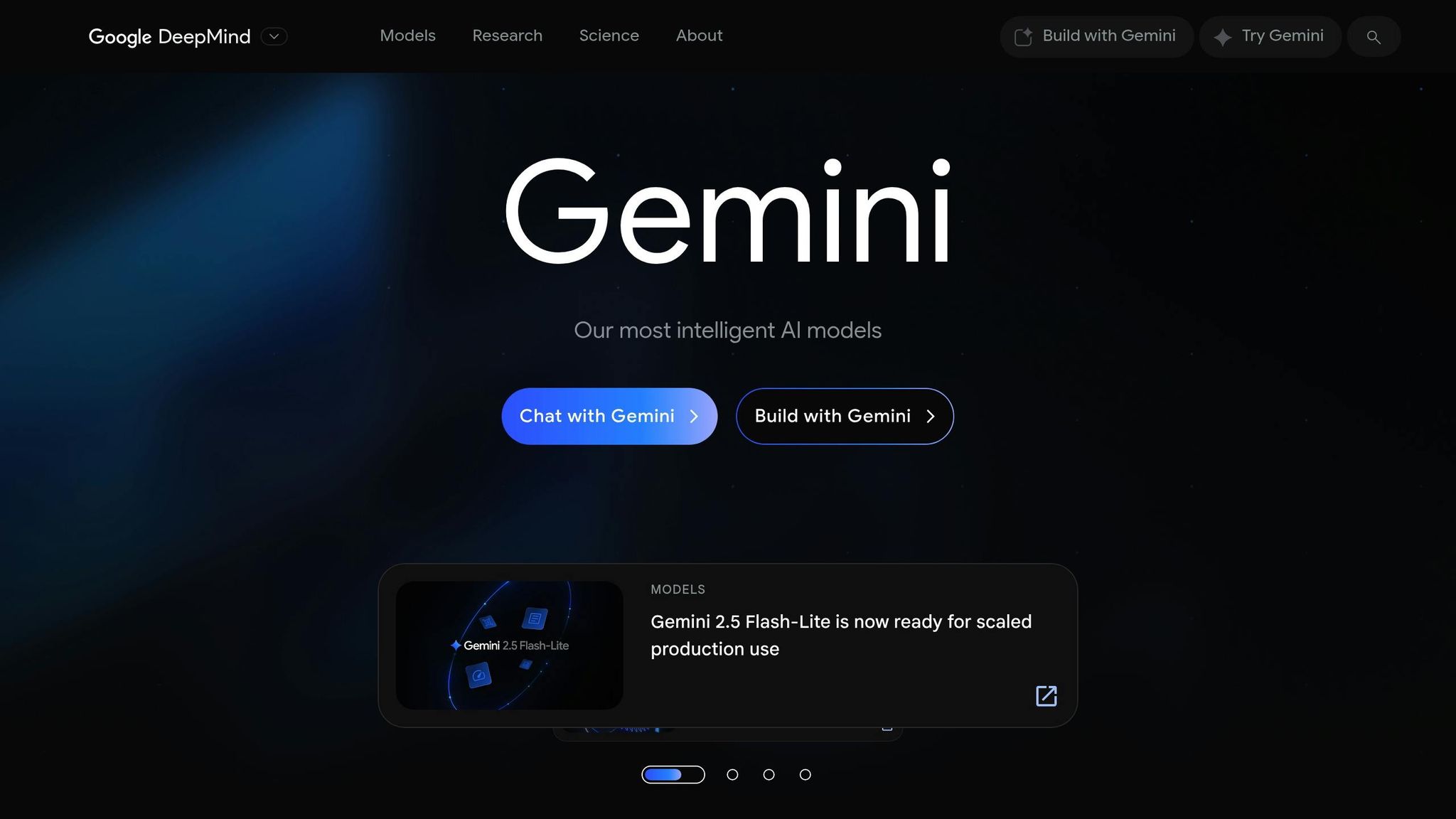
Gemini, developed by Google, represents a multimodal AI model. However, there is limited public information available about its performance in areas such as query handling, response structuring, tone flexibility, cost-effectiveness, and scalability.
As Google releases more official documentation and evaluations, a clearer picture of Gemini's capabilities will emerge. This forthcoming analysis will help better understand how Gemini fits into enterprise applications, adding valuable context to our comprehensive model comparisons.
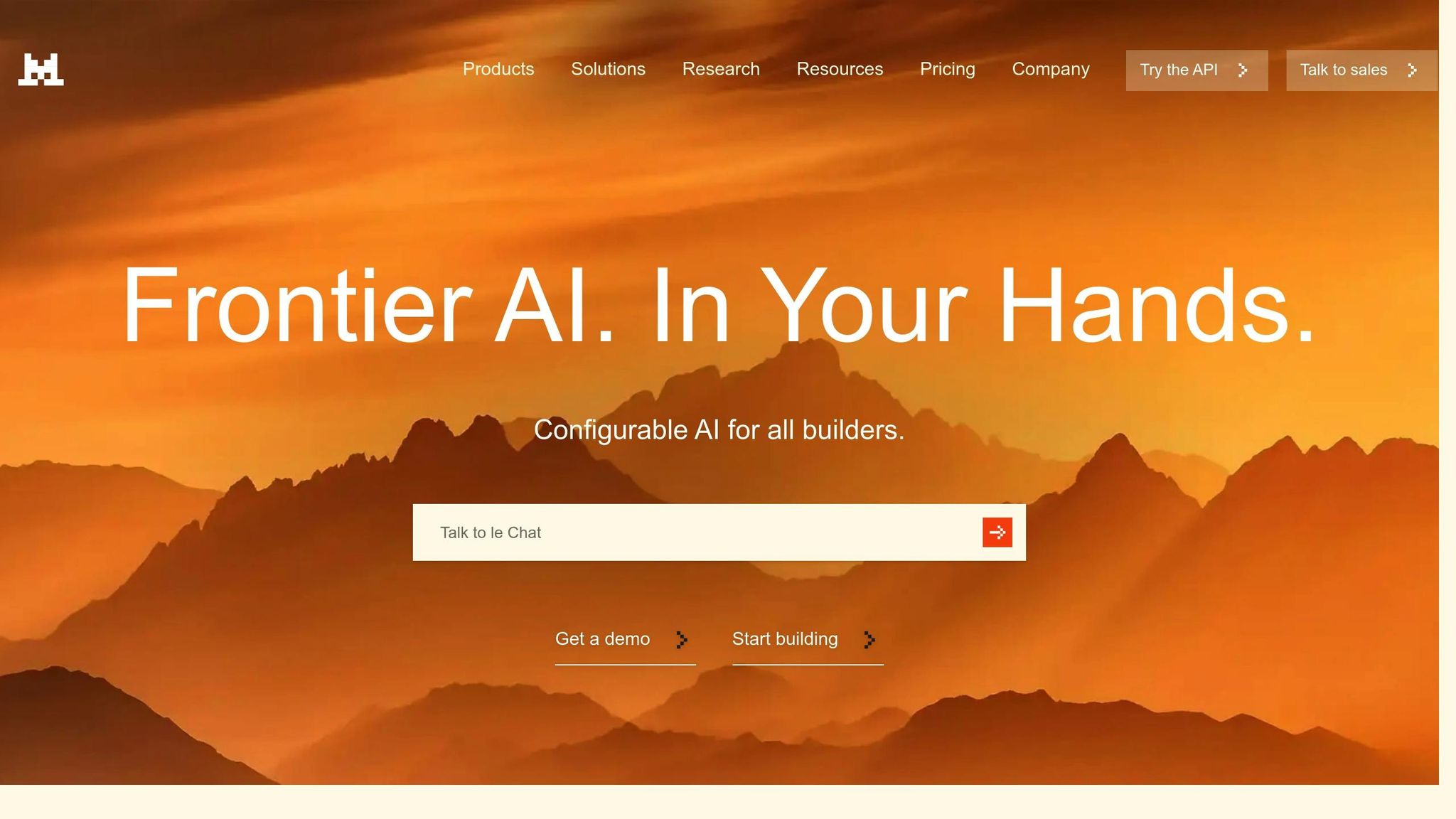
Mistral AI is a European-developed language model that aims to combine strong performance with efficient operation. While it shows promise, there is currently no verified data available for key evaluation metrics such as accuracy, completeness, tone, cost efficiency, and scalability. Updates will be provided as more information becomes available.
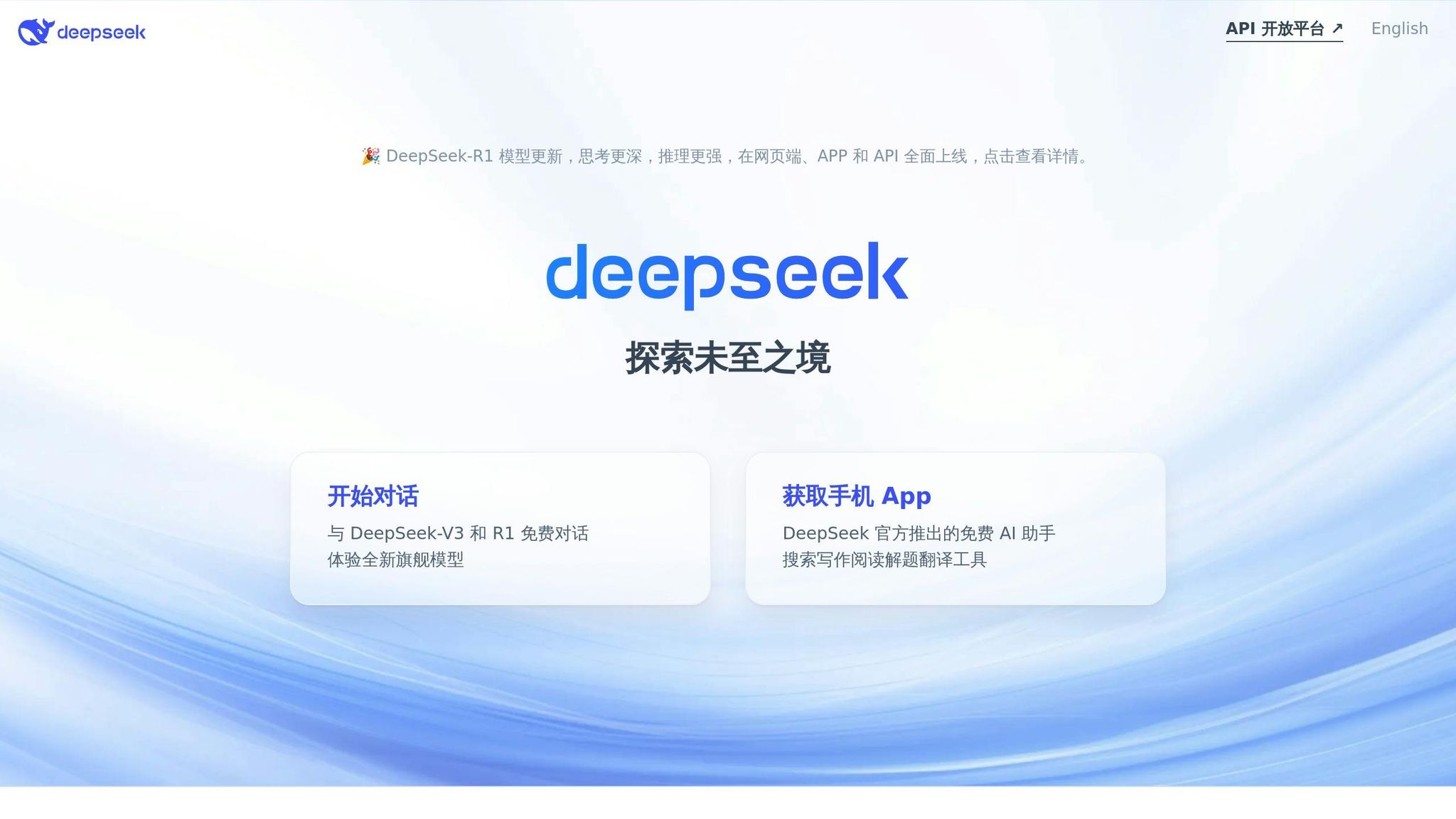
DeepSeek, developed by DeepSeek AI, is tailored for tasks that demand mathematical reasoning and code generation. While initial findings suggest it performs well in specific technical areas, its overall capabilities are still under review. Here's a closer look at its key attributes:
When it comes to mathematical and coding challenges, DeepSeek shows strong capabilities. It handles multi-step problems and constructs mathematical proofs with precision. However, its performance can be inconsistent when dealing with inquiries that require broader contextual understanding.
DeepSeek provides thorough, step-by-step explanations for technical questions, making it particularly useful for users seeking detailed breakdowns.
The platform adopts a formal, academic tone, which suits technical documentation and precise communication. However, this approach might limit its effectiveness in more creative or versatile applications.
Pricing information for DeepSeek remains sparse, making it difficult to directly evaluate its cost efficiency. Organizations will need to determine its value based on their specific needs and usage.
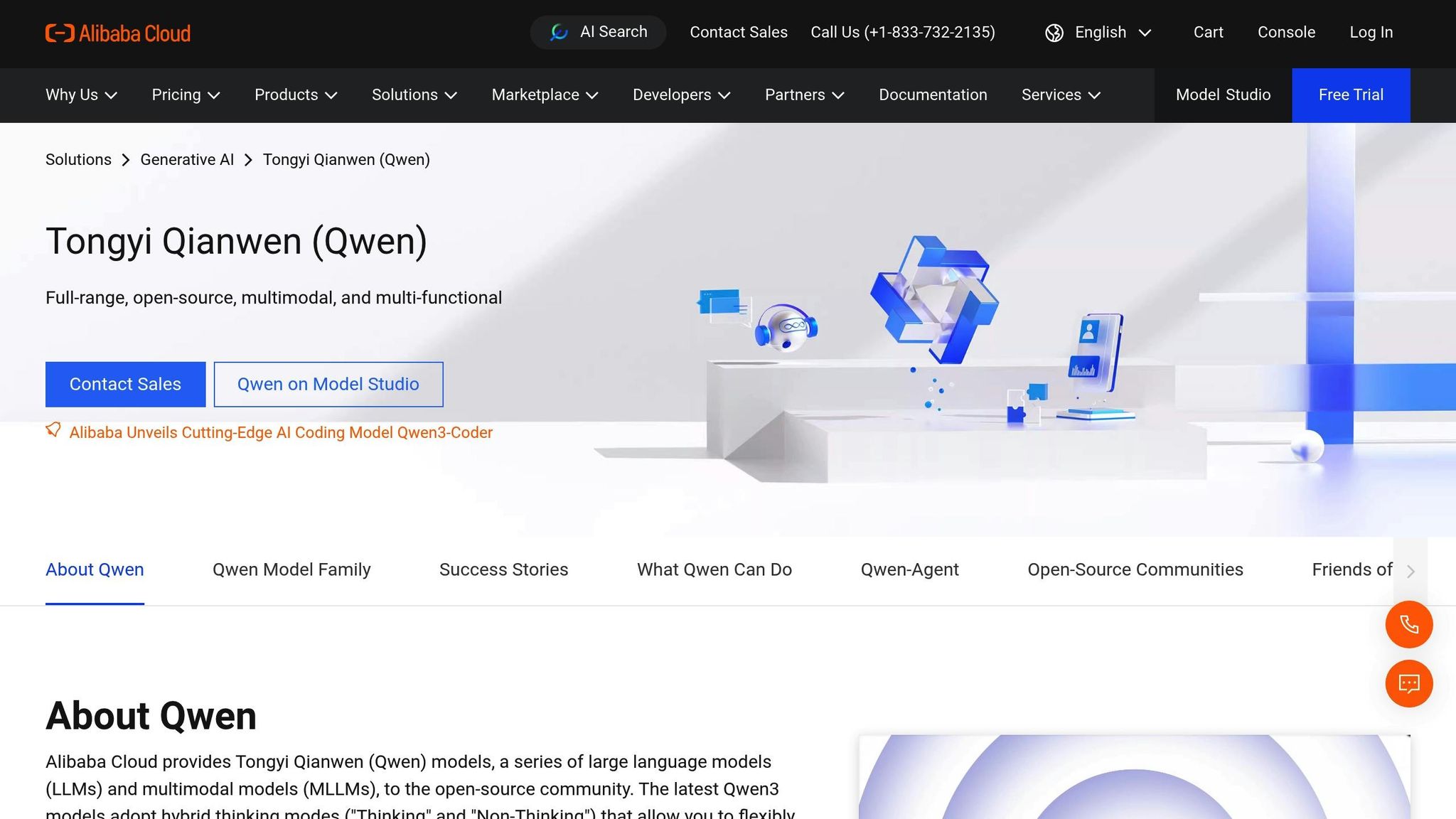
Building on the discussion of DeepSeek, Qwen offers its own strengths, balancing performance and cost efficiency. Developed by Alibaba Cloud, this model is tailored for enterprise applications, with a strong emphasis on multilingual functionality and resource efficiency - an appealing choice for companies operating in diverse global markets.
Qwen delivers dependable accuracy, especially in business and technical contexts. It performs well with multilingual queries, maintaining consistent quality across languages. However, its accuracy may waver when tackling highly specialized scientific or medical topics, where additional context could enhance its results.
The model provides clear, well-organized responses that cover key points without veering into unnecessary detail. Its answers are concise yet thorough, making it a great fit for business communication and technical documentation where clarity and efficiency are essential. Qwen strikes a balance between detail and brevity, ensuring the information is both relevant and digestible.
Qwen is adept at adjusting its tone to suit various communication styles, from formal business exchanges to more casual conversations. It maintains a consistent professional tone while adapting to the input prompt's requirements. Its multilingual capabilities extend to recognizing and incorporating regional nuances, enabling it to tailor responses appropriately for different cultural contexts.
Qwen's token-based pricing model offers competitive value, particularly for high-volume use cases. Its ability to generate accurate responses with minimal iterations can lead to reduced costs compared to models that require multiple refinements. For businesses with extensive multilingual needs, Qwen's specialized features can eliminate the need for separate language-specific models, further improving cost efficiency.
The model is designed for enterprise-scale operations, reliably managing concurrent requests even during peak demand. Its processing architecture ensures steady performance across varying workloads, making it well-suited for applications with unpredictable traffic. Additionally, its multilingual optimization ensures that scalability and performance remain consistent, regardless of the language mix in input requests - an advantage for global enterprises.
Qwen stands out as a practical choice for organizations prioritizing multilingual support and cost-conscious solutions in their AI model selection, making it well-suited for real-world enterprise use.
Understanding each model’s strengths - such as language capabilities, cost efficiency, integration options, and support - is essential for selecting the right fit for your specific needs.
Here’s a quick comparison of key attributes across various models:
| Model | Key Features | Common Use Cases |
|---|---|---|
| GPT-4/GPT-5 | Exceptional language skills with strong reasoning and creative output, though at potentially higher costs. | Creative content creation, in-depth analysis, strategic planning. |
| Claude | Prioritizes safety and nuanced conversational abilities. | Regulated industries, customer service, content moderation. |
| Llama 4 | Open-source flexibility; further data pending. | Custom enterprise solutions, research-driven projects. |
| Gemini | Multimodal capabilities with seamless Google ecosystem integration. | Marketing campaigns, data analysis, creative projects. |
| Mistral | Designed for compliance and reliable performance. | Enterprises with strict regulatory standards. |
| DeepSeek | Specializes in technical tasks like code generation and documentation. | Software development, technical writing, code reviews. |
| Qwen | Offers multilingual capabilities with scalable performance. | Global operations requiring multilingual support. |
This table provides a snapshot of each model’s standout features and typical applications. Below, we delve deeper into these considerations for enterprise use.
Models like Claude and Mistral, which emphasize safety and regulatory compliance, are ideal for industries with stringent oversight. On the other hand, advanced models such as GPT-4/5 excel at handling creative projects and complex analyses. DeepSeek is particularly well-suited for technical tasks like coding and documentation, making it a strong choice for software development teams.
Cost and technical demands can differ widely across models. Additionally, deployment options - whether cloud-based or self-hosted - play a critical role in determining integration ease and control. Each approach offers unique benefits, depending on your enterprise’s priorities.
This overview serves as a foundation for deeper evaluation and testing of these models on Prompts.ai, helping you make informed decisions tailored to your organizational goals.

Evaluating language models effectively demands more than surface-level comparisons. Prompts.ai steps up to the challenge by offering detailed analysis tools and practical testing features that go far beyond basic benchmarks. The platform redefines how AI developers analyze language model outputs, making the process both thorough and insightful.
With over 35 top-tier language models - including GPT-4, Claude, LLaMA, and Gemini - available in a single interface, Prompts.ai simplifies the complexity of accessing and comparing leading models. This consolidation eliminates the hassle of juggling multiple platforms while delivering the in-depth insights needed for smarter decision-making.
One of the platform's standout features is token-level analysis, which dissects each model's response to show how it processes and generates text. This granular breakdown shines a light on which models excel at specific tasks and why certain prompts yield better results with particular architectures.
Managing costs is another critical aspect of model evaluation. Prompts.ai addresses this with its real-time FinOps layer, which tracks token usage across models and translates it into precise USD costs by model and prompt. This transparency helps teams balance performance needs with budget constraints, often uncovering ways to achieve similar outcomes for less.
The platform's scenario testing capabilities take evaluations a step further by focusing on real-world use cases rather than generic benchmarks. Whether you're testing customer service interactions, technical documentation, or creative content, Prompts.ai allows side-by-side comparisons tailored to your specific needs. This approach highlights how models perform under practical conditions, providing insights that generic tests simply can't offer.
For enterprises, the platform's security and compliance features ensure sensitive data remains protected throughout the testing process. With enterprise-grade controls and audit trails, Prompts.ai is well-suited for industries where data governance and regulatory compliance are non-negotiable. This means teams can rigorously test models without compromising security or standards.
Cost management is further streamlined through the Pay-As-You-Go TOKN credit system, which ties expenses directly to usage. By eliminating recurring subscription fees, this pricing model makes extensive testing across multiple models and scenarios more accessible, removing the financial barriers to thorough evaluation.
Prompts.ai also includes prompt optimization workflows, which track performance metrics to identify the most effective prompt variations for different models. This transforms prompt engineering into a data-driven process, helping teams fine-tune inputs for maximum impact.
When it comes time to move from testing to deployment, the platform ensures a smooth transition. Its integration capabilities maintain consistency across the development lifecycle, so teams don't need to rebuild workflows when shifting from evaluation to production.
What truly sets Prompts.ai apart is its recognition that context matters more than raw performance metrics. A model that excels at creative writing might falter with technical tasks, while another might offer strong reasoning at a higher computational cost. By uncovering these nuances, the platform empowers teams to select models that align with their specific needs rather than relying on generalized benchmarks.
As the use of AI in enterprises continues to grow, Prompts.ai ensures that model selection is driven by meaningful, data-backed insights, helping businesses achieve outcomes that matter most.
The world of language models is evolving at a rapid pace, with each major contender offering distinct advantages. GPT-4 stands out for its adaptability and strong reasoning abilities, while Claude is a go-to choice for safety-focused applications and nuanced conversations. Llama 4 provides remarkable open-source flexibility, Gemini excels in handling multimodal tasks, and specialized models like Mistral, DeepSeek, and Qwen shine in solving niche challenges.
Selecting the right model goes beyond raw performance metrics - it’s about understanding how each one aligns with your specific needs. For example, a model that thrives in creative writing might falter when tasked with technical documentation. Similarly, a high-performing model could come with a steep cost per token, while a seemingly less prominent option might deliver excellent results at a lower price. The key is context: how a model responds to your prompts and workflows is what truly matters.
Thorough evaluation is essential. Success with AI often hinges on analyzing how models perform in real-life scenarios, uncovering insights that generic benchmarks might overlook. For instance, Claude’s safety features and conversational strengths make it ideal for customer service. GPT-4's structured reasoning is invaluable for technical documentation, while creative tasks often benefit from specialized models like Mistral. When it comes to multilingual projects, Qwen or Llama variants tend to lead, depending on the languages required.
Thanks to Prompts.ai’s robust testing environment, these insights become actionable. By enabling structured comparisons, Prompts.ai ensures you can choose models that strike the right balance between performance, cost, and compliance.
Ultimately, achieving success with AI depends on pairing the right model with the right task. Through systematic evaluation and ongoing refinement, AI transitions from an experimental tool to a dependable business asset, delivering measurable outcomes through thoughtful selection and optimized prompts.
Prompts.ai takes the guesswork out of choosing the best language model by providing comprehensive analysis tools that assess outputs based on factors like accuracy, tone, completeness, and style. Users can experiment with varied inputs, review token-level details, and simulate practical scenarios to gain a clearer understanding of how a model performs.
This interactive approach helps businesses make well-informed choices about which model best suits their objectives, adheres to compliance standards, and fulfills operational needs. Whether you're focused on training models, creating AI agents, or refining prompts, Prompts.ai delivers the insights necessary to achieve optimal outcomes.
GPT-5 is celebrated for its speed, adaptability, and advanced problem-solving skills, making it a go-to option for demanding tasks such as coding, tackling complex problems, and handling practical applications. It provides quicker responses with greater precision, particularly in challenging situations.
Claude 4 shines in conversational tasks, excelling in dialogue-heavy interactions. Its strong performance on benchmarks highlights its reliability, making it ideal for natural conversations and customer service roles.
Qwen is a standout choice for multilingual projects, especially in Chinese and English, and boasts a context window of up to 200,000 tokens. This capability makes it well-suited for processing lengthy documents, managing intricate scenarios, and performing in-depth text analysis.
When selecting an AI language model, it's easy to get caught up in metrics like accuracy or speed. However, these numbers only tell part of the story. Factors like reliability, bias mitigation, interpretability, and practical application are equally important when evaluating how well a model will perform in everyday use.
By taking these elements into account, you can ensure the model not only meets your objectives but also complies with regulatory requirements and produces fair, consistent outcomes. This broader perspective helps create AI systems you can trust, especially when tackling complex, real-world challenges.


